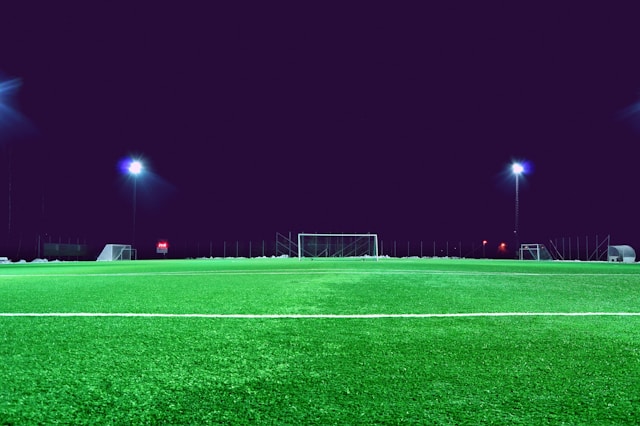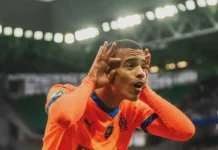The Northern Lights dance over Bodø as Aspmyra Stadium fills up with yellow supporters, their characteristic toothbrushes swaying in the winter air. What was once a modest club from the north has become a symbol that Norwegian football can compete with Europe’s best. From a city with 42,000 inhabitants, where the entire population could fill Tottenham’s stadium with room to spare, Bodø/Glimt has risen as Norway’s pride in European football.
While Norway has struggled to qualify for major championships for over two decades, this club from the Arctic has ignited hope that Norwegian football is finally finding its place among Europe’s elite. Bodø/Glimt have not only made history – they have perhaps also shown the way forward for all of Norwegian football, at a time when players like Erling Haaland and Martin Ødegaard dominate on the biggest stages.
Norwegian football’s new reality
Norway has never been considered a football nation on a par with Brazil, Germany or Spain. The country’s best performances have been occasional bright spots rather than sustained success. But something has changed fundamentally in recent years. Where Norwegian football previously produced some talents who found their way out, we now see a systematic development that creates world-class players.
Erling Haaland is on the verge of becoming Norway’s all-time leading scorer, just one goal away from Jørgen Juve’s 90-year-old record. Martin Ødegaard has established himself as one of the Premier League’s most creative midfielders and Norway’s natural leader on the pitch. But what makes the situation particularly interesting is that these no longer appear as isolated exceptions.
Oscar Bobb of Manchester City, Antonio Nusa of RB Leipzig, Andreas Schjelderup of Danish football, and Sverre Nypan of Rosenborg all show signs of being able to follow in the footsteps of Haaland and Ødegaard. Norwegian football is not experiencing its first heyday, but possibly its very first period where talent production seems both systematic and sustainable.
System changes and modern methods
This development does not come by itself. The Norwegian Football Association introduced the Academy Classification Model in 2017, an ambitious attempt to professionalize talent development in Norwegian top clubs. The model places demands on everything from training facilities to the competence of coaches, and has forced clubs to rethink player development.
At the same time, Norwegian football has embraced technological innovations that seem almost futuristic. Thomas Brantsæter, Head of Talent Identification at NFF, describes how 120 of Norway’s best young players are now using virtual reality to train cognitive awareness and decision-making skills.
The increased international interest in Norwegian football has also led to more people following Norwegian clubs and players in new ways. Supporters travel further to watch the matches, media coverage has increased significantly, and the betting market has responded with more options. For those who are interested in betting on Norwegian football, there is now a list of the best betting sites that cover everything from the Eliteserien to European tournaments where Norwegian teams participate.
Geir Jordet, the Norwegian psychology professor who first popularized the importance of chanting in football, has had an enormous influence on Norwegian player development. His research shows that the best players, such as Haaland, know when to look at the ball and when to seek space – a trait that is now systematically trained in Norwegian academies.
The way forward
Norway is facing a reality where the national team has more talent available than in many years, but still struggles to qualify for major championships. The national team failed to qualify for Euro 2024, despite players such as Haaland, Ødegaard and a number of others who play at a high level internationally.
The question is therefore not whether Norway has enough individual talents, but whether the systems around the national team and club football are able to fully exploit the potential. Bodø/Glimt’s success shows that it is possible to compete internationally with creativity, good planning and a clear playing philosophy.










